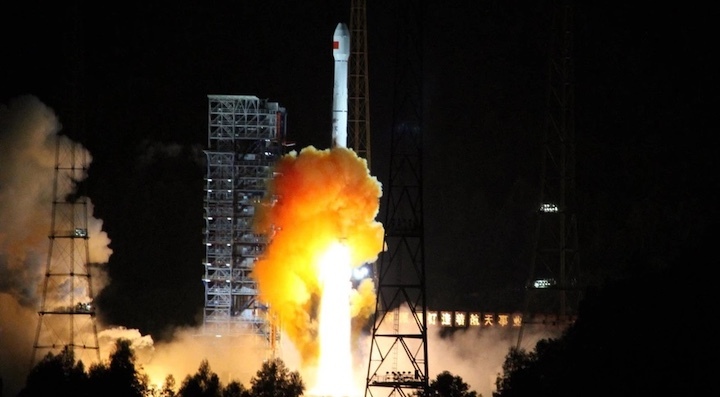15.02.2022

WASHINGTON — In a case of celestial mistaken identity, a spent upper stage that will crash on the far side of the moon in March is now linked to a Chinese launch in 2014, not a SpaceX launch of an Earth and space science satellite in 2015, illustrating the difficulties in tracking objects beyond Earth orbit.
Astronomer Bill Gray reported Jan. 21 that an object designated WE0913A was on a trajectory that would collide with the moon March 4. Gray had previously identified WE0913A as the upper stage from the February 2015 Falcon 9 launch of the Deep Space Climate Observatory (DSCOVR), a spacecraft launched to the Earth-sun L-1 Lagrange point to monitor solar activity and provide full-disk images of the Earth. The stage was left in a chaotic orbit in cislunar space.
The upcoming collision attracted worldwide attention and, in some cases, criticism of SpaceX for “littering” the moon. The object is expected to crash near the crater Hertzsprung on the lunar farside, far from any other spacecraft landing sites, and create a crater about 20 meters across.
Gray, though, revised the identification of WE0913A Feb. 12. He said he linked the object to the Falcon 9 upper stage back in 2015 on the assumption that the stage passed close to the moon shortly after launch. However, he said he was informed DSCOVR itself did not pass close to the moon on its way to L-1, thus it was unlikely that the upper stage made that close flyby.
A better fit to observations of WE0913A, he said, was the launch of China’s Chang’e-5 T1 spacecraft on a Long March 3C in October 2014. That spacecraft flew a free-return trajectory around the moon to test the ability of a sample return capsule to survive reentry and land on Earth. That stage flew close to the moon several days after launch on an orbit that matches what’s expected of a stage that launched a spacecraft on a translunar trajectory.
“In a sense, this remains ‘circumstantial’ evidence. But I would regard it as fairly convincing evidence,” Gray wrote. “So I am persuaded that the object about to hit the moon on 2022 Mar 4 at 12:25 UTC is actually the Chang’e 5-T1 rocket stage.”
The series of events shows the difficulty in tracking objects in cislunar space, given the lack of telescopes, radars or other tools to identify them. The Defense Department has shown a growing interest in monitoring activities in cislunar space, sometimes called xGEO, out of concerns that rival powers could hide anti-satellite weapons there. The Air Force Research Lab (AFRL) is pursuing a mission called Cislunar Highway Patrol System to test space domain awareness technologies in cislunar space.
“As we push further away, there are going to be challenges when we push into xGEO and cislunar from a sustainability aspect,” said Andrew Williams, deputy technology executive officer for space S&T at AFRL, during a panel discussion at the SmallSat Symposium Feb. 9. That includes, he said, what’s considered a proper disposal orbit for stages like the one that will hit the moon. “There’s a lot of extra dynamics to the sustainability challenge.”
That will become a larger issue as robotic and human activity on and around the moon increases in the next decade. The upcoming impact “illustrates well the need for a comprehensive regulatory regime in space, not only for the economically crucial orbits around Earth but also applying to the moon,” said Holger Krag, head of ESA’s Space Safety Program, in a Feb. 2 statement.
Quelle: SN

